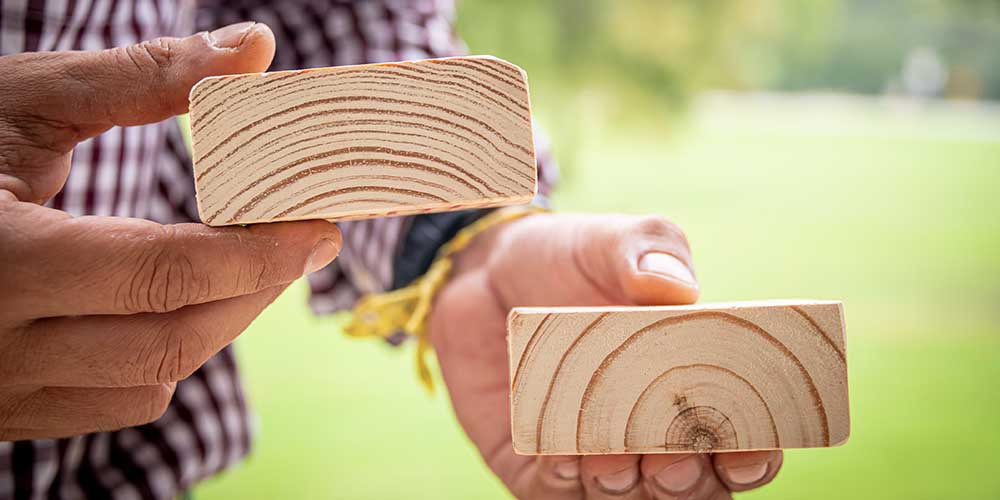Building Materials and Composites Stories

Market Barriers
Dr. Dan Seale, a professor in Mississippi State's Forest and Wildlife Research Center, is working to increase the value of undervalued hardwood species like yellow poplar and sweet gum. Through a USDA Forest Service grant, Seale's team has created a database mapping area in the eastern U.S. with high volumes of these species, helping mills locate ideal spots for processing facilities. The goal is to improve the economic value of Mississippi's timberland by finding new uses for these woods. Keith Ward, a doctoral student, is analyzing the suitability of these hardwoods for engineered wood products like I-Joists and structural panels. By developing markets for this timber, the research benefits landowners, mills, and the broader supply chain, creating jobs and boosting the economy.
2023

Using the Resources
Dr. Mostafa Mohammadabadi, an assistant professor at Mississippi State's Forest and Wildlife Research Center, is researching ways to utilize small-diameter and underutilized materials (SDUs) in forests, which are often left unused due to high transportation costs. By developing products similar to cross-laminated timber (CLT) and glue-laminated timber (glulam), SDUs can be repurposed for construction, reducing wildfire fuel and preventing carbon emissions from burning. These wood products are carbon-negative, as they continue to store carbon even after being cut. This research aims to improve forest health, create a market for SDUs, and support sustainable forest management practices. The project also emphasizes education, inspiring students from diverse disciplines to contribute to creating green solutions in forestry and construction.
2023

How Tree Rings Impact Strength
According to the U.S. Department of Agriculture, 33.9 billion board feet of softwood lumber was produced in the U.S. in 2017, the latest year data is available. More than 50% of that is southern yellow pine, also known as southern pine. The strength and quality of southern pine lumber are essential to keep the nation's forest products industry thriving. That's why FWRC researchers seek to understand southern pine characteristics that impact strength and quality. Slow growing, older trees often have many rings closer together while younger, faster growing trees have fewer rings that are farther apart.
Dr. Frederico Franca, assistant professor in the Department of Sustainable Bioproducts, and Dr. Nathan Irby, former doctoral student, sought to evaluate whether growing characteristics such as how Rings per Inch (RPI) affect strength. The team evaluated the RPIs and specific gravity of 471 two-by-eight and 306 two-by-ten pieces of dimension lumber. They found an average of four or more rings per inch. Franca said that the big picture goal of the work is to maintain the value of southern yellow pine while finding the intersection between optimal economic productivity and mechanical properties. This research was funded by USDA Agricultural Research Service, Southern Pine Inspection Bureau, Timber Products Inspection, the USDA Forest Service Forest Products Lab, and the Forest and Wildlife Research Center.
Collaborators include Drs. Michael Barnes, Daniel Seale, Rubin Shmulsky, and Edward Entsminger.